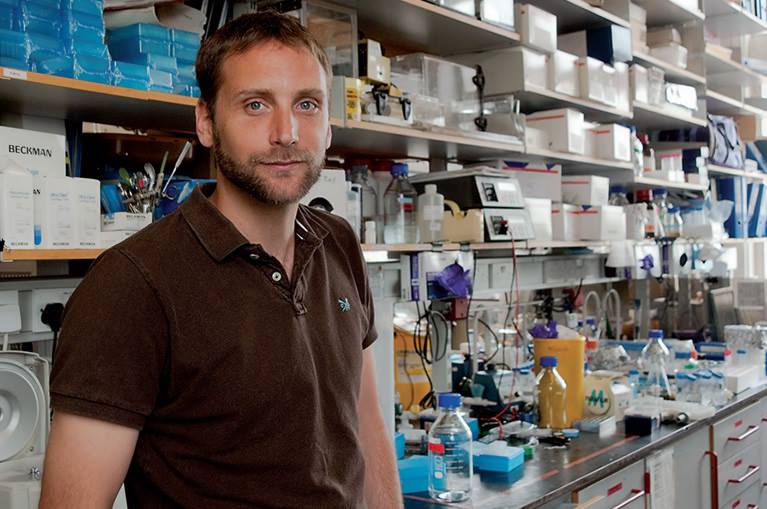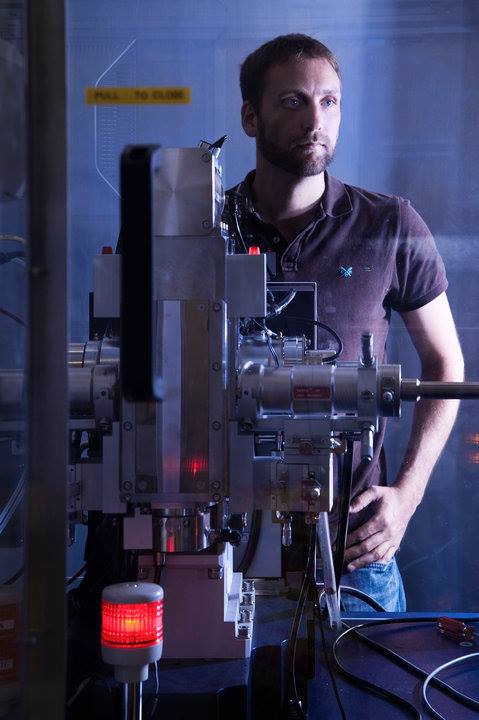Visualizing the bionanomachines that create potent antibiotics and other modern drugs
Researchers from McGill University and Yale University used the CLS to make a discovery that could help design future therapeutic drugs.
By Sarath Peiris3D model of proteins.
The research team studied how mega-enzymes, known as nonribosomal peptide synthetases (NRPSs), create potent antibiotics, immunosuppressants and other modern drugs.

In a paper featured on the cover of the May 2020 issue of Nature Chemical Biology, the team reports how they were able to visualize an NRPSs’ mechanical system using the CMCF beamline at the CLS.
“NRPSs are really fantastic enzymes that take small molecules like amino acids or other similar sized building blocks and build them up to natural, biologically active, potent compounds, many of which are drugs,” said Martin Schmeing, associate professor at McGill University Canada Research Chair in Macromolecular Machines, Director of the Centre de Recherche en Biologie Structurale.
This improved understanding of NRPS processes will help bacteria and fungi be leveraged for the production of desired new compounds by manipulating microbes instead of relying on organic synthesis.
“An NRPSs works like a factory assembly line that consists of a series of robotic workstations,” Schmeing stated. “Each station has multi-step workflows and moving parts that allow it to add one building block substrate to the growing drug, elongating and modifying it, and then passing it off to the next little workstation, all on the same huge enzyme.”

The NRPS enzymes can produce a vast variety of compounds because their building blocks are not limited to the twenty amino acids that make up proteins. The team used the CLS to show that the enzyme has evolved by “stealing” keto-reduction domains from another protein, which helps give the enzymes access to more than 500 other types of building blocks to make the many different compounds.
“Without the change that allows NRPSs to transform ketoacids into a hydroxy acid, it wouldn’t be able to use the keto acids as part of its 500 building blocks,” Schmeing said. “This is the first time anyone has seen these enzymes transform keto acids into a building block that can be put into a long peptide drug.”
Scientists have long been excited about the potential of bioengineering NRPS by identifying the order of building blocks and reorganizing the workstations in the enzyme to create new drugs, but the effort is rarely successful.
“You do the actual experiments in the lab and you end up getting very little out of it. While there have been more modern experiments that get better results, it’s still a major problem that if you rearrange one of your enzymes genetically, you often get an inactive enzyme,” Schmeing added.
“To be able, in the future, to properly manipulate these enzyme systems, we need to have seen all the systems at work. The CLS is what we use to visualize these systems.”
The Nature Chemical Biology paper is titled: Structural basis of keto acid utilization in nonribosomal depsipeptide synthesis. The research team members are: Martin Schmeing; Diego A. Alonzo; Clarisse Chiche-Lapierre and Michael J. Tarry (McGill University) and Jimin Wang (Yale University).
Alonzo, Diego A., Clarisse Chiche-Lapierre, Michael J. Tarry, Jimin Wang, and T. Martin Schmeing. "Structural basis of keto acid utilization in nonribosomal depsipeptide synthesis." Nature Chemical Biology (2020): 1-4. DOI: 10.1038/s41589-020-0481-5.
For more information, contact:
Victoria Schramm
Communications Coordinator
Canadian Light Source
306-657-3516
victoria.schramm@lightsource.ca
